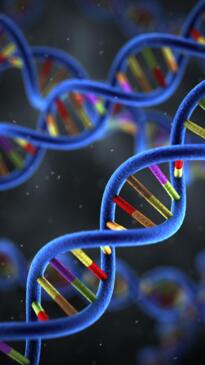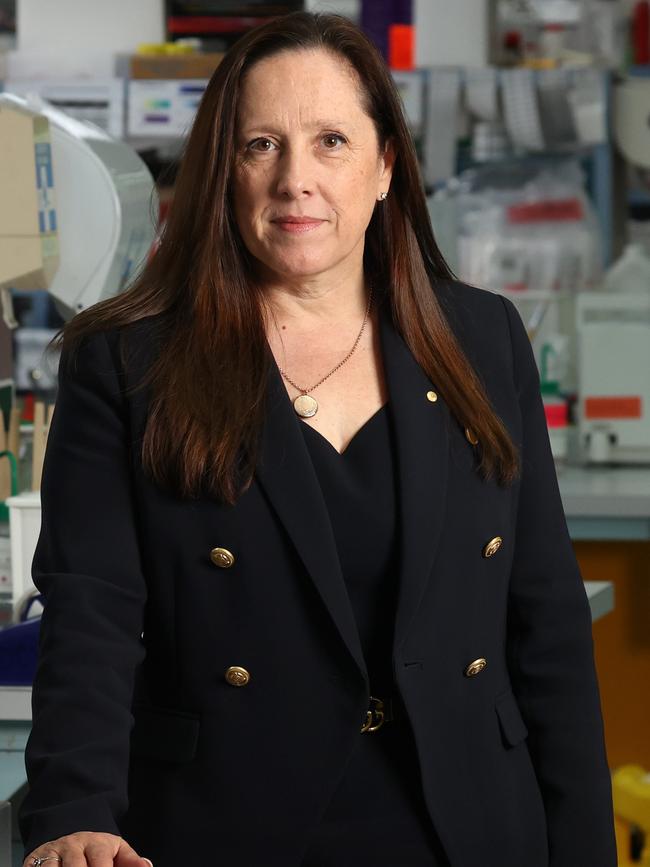Top forensic scientists showdown looms at DNA inquiry
The Queensland scientists who approved a notorious process to examine crime scene evidence claim they had no choice, saying two things were to blame.

QLD News
Don't miss out on the headlines from QLD News. Followed categories will be added to My News.
The Queensland scientists who approved a controversial process to examine crime scene evidence say they had no choice, blaming a “massive backlog” of samples at the state-run lab and the costs invested in the robotic system.
The validation of an automated extraction method to examine DNA, known as Project 13, is at the centre of the second commission of inquiry into the scandal-plagued lab.
Thousands of cases have had to be reviewed following revelations the automated method was flawed while doubt has been cast over tens of thousands of rape and murder cases, including the brutal unsolved murder of Mackay woman Shandee Blackburn.
Five scientists who authored the report in 2008 that approved the automated method have been grilled on the opening day of the inquiry.
Senior counsel assisting Andrew Fox cited concerns raised in the media by whistleblower Dr Kirsty Wright.

“There is a suggestion that’s been put that the laboratory, that is those who were working in the laboratory at the time of the automation project, must have been sufficiently cognizant of difficulties with automation as a whole that persisting with it was irresponsible,” he said.
Senior scientist Tom Nurthen, who was leading the automation team in 2008, said the lab had invested a significant amount of money on the robotic system, which had been validated by forensic labs in South Australia and Western Australia.
“We know the manual method was fantastic but it was also a very, very long method – something like four hours to do between 12 to 24 samples, and that just wasn’t practical,” he told the inquiry.
Forensic Science Queensland reporting scientist Allan McNevin was not named as an author on the report but was a prominent member of the team at the time.
He told the inquiry the lab had a “massive backlog” of samples to test.
“If we had just continued down a fully manual method, it would have been irresponsible because a lot of it just wouldn’t get done.
“In order for us to actually get on with the business of doing DNA profiling, we needed to automate.
“We needed to implement technology which enabled us to actually get through the volume of work the laboratory was being supplied with.”
The lab’s former managing scientist Vanessa Ientile said she had no recollection of raising any concerns about the automated process with the Queensland Police Service after issues were raised about low yields of DNA being found in the extraction method.
“I don’t recall any specific conversations around that,” she told the inquiry.
“I believe, based on the information that I’ve reviewed, that I was comfortable that it was comparable to our existing manual methods.”
EARLIER
Two of the nation’s most high-profile forensic scientists will face off at the commission of inquiry into Queensland’s scandal-plagued DNA laboratory this week.
Prominent whistleblower and respected forensic biologist Kirsty Wright’s discovery of another flawed extraction method at the state-run lab prised open the second major probe into the lab in a little over a year.
Dr Wright has antagonised authorities for months, publicly questioning why the original commission of inquiry last year refused to openly examine a flawed automated extraction method known as Project 13.
The whistleblower’s vocal criticism of the decision has also called into question current Forensic Science Queensland chief Linzi Wilson-Wilde, the world-renowned forensic scientist who has been accused of failing to adequately detail issues relating to Project 13.

The inquiry will launch on Monday, with half a dozen scientists expected to provide expert evidence concurrently.
But tensions will be charged and esteemed careers on the line as Dr Wright and Prof Wilson-Wilde are expected to feature concurrently during a hearing the following day.
Prof Wilson-Wilde will then be individually grilled about Project 13 on Wednesday.
Health Minister Shannon Fentiman tasked retired Federal Court judge Annabelle Bennett with conducting the short and sharp probe, with the findings expected to be handed down on November 17.
“She needs to get to the bottom of what happened with Project 13,” Ms Fentiman said of Dr Bennett when launching the inquiry earlier this month.
“I want to make sure that absolutely everyone in our community has absolute confidence in our DNA lab.”
Ms Fentiman said at the time she was compelled to launch the second probe into the scandal-plagued lab after Dr Wright personally presented documents to her detailing the failures associated with Project 13.
The flawed extraction method, which was in use at the state-run lab for nine years dating back to 2007, was also used to examine forensic evidence relating to the horrific unsolved murder of Mackay woman Shandee Blackburn.
Dr Wright told The Courier-Mail earlier this month the method was recovering 90 per cent less DNA than the manual extraction method.
Ms Fentiman’s staunch advocacy of Prof Wilson-Wilde appeared to wane when the Health Minister launched the inquiry, with the lab boss’s future likely to hinge on the outcome of Dr Bennett’s findings.
“The purpose of this commission of inquiry is so that everyone can have confidence in the professor and in the lab going forward,” Ms Fentiman said.
HOW THE CRISIS UNFOLDED
Late November 2021: The family of murdered Mackay woman Shandee Blackburn call for an independent inquiry into the state-run forensic laboratory. Forensic biologist Dr Kirsty Wright tells the media there were errors throughout the DNA profiling process, and says she believes Shandee’s case “may be the tip of a very large iceberg.”
March 11, 2022: Dr Wright lodges a complaint with the state’s Crime and Corruption Commission alleging lab experts engaged in “systemic dishonest conduct”, with the lab accused of knowingly using flawed testing processes.
March 29, 2022: Health Minister Yvette D’Ath tells parliament there would be a “comprehensive review” of the FSS on the recommendation of her department, which oversees the lab. “My department has recommended to me, because it has been over 10 years since the system has had a comprehensive review, that we should undertake that and we are in the process of developing terms of reference,” she says.
May 10, 2022: The terms of reference for the review are unveiled, more than a month later. The closed-door review is criticised by Dr Wright and the LNP for “falling well short” of being able to investigate the alleged failings.
May 30, 2022: The LNP calls for a royal commission-style inquiry in the DNA laboratory. Leader David Crisafulli says “Victims of serious crimes are being denied justice due to these failings.”
May 31, 2022: In response, Ms D’Ath accuses the LNP of “politicising” the issue. “I have no idea why the Opposition would be calling for this other than playing pure politics”,” she says. “It is a duplication, it is completely unnecessary.”
June 2, 2022: Queensland police confirm they are reviewing hundreds of rape cases dating back to 2018. It is confirmed the state-run laboratory has been refusing to test crime scene DNA below a certain threshold. The QPS data reveals DNA profiles were found in two-thirds of samples from sex offence investigations that the forensics lab had initially claimed contained “insufficient DNA”.
June 6, 2022: The Premier announces a Commission of Inquiry into the state-run DNA testing. “It is clear to me that nothing short of a full, open and rigorous commission of inquiry can restore confidence in DNA testing in this state,” she says. Ms D’Ath orders the immediate removal of DNA thresholds.
September 2022: Public hearings commence for commission of inquiry, led by Walter Sofronoff KC. Over the following weeks, disturbing evidence of toxic work culture at the lab emerges as well as the manipulation of managing scientists to introduce an arbitrary threshold for testing that ultimately dismisses thousands of samples taken from serious crime scenes.
December 13, 2022: Sofronoff hands down inquiry’s final report, featuring more than 100 recommendations and findings being “horrible reading” with failings that were “as big as it gets”.
Late May, 2023: Confirmation Cathie Allen was sacked more than five months after being blamed for the failings in a Commission of Inquiry, along with former Forensic Scientific Services team leader Justin Howes and lab manager Paula Brisotto
June 21: Courier-Mail reveals 30,000 cases needing to be reviewed as a result of the failings at the lab.
September 8: Dr Kristy Wright, through The Australian, blows the whistle about Project 13 which calls into question the decisions of recently appointed lab chief Prof Linzi Wilson-Wilde.
September 25: Shandee’s mum Vicki Blackburn, alongside Opposition Leader David Crisafulli, pleads with the Palaszczuk government to reopen inquiry in the wake of findings related to Project 13.
Later that day: Health Minister Shannon Fentiman says fresh inquiry “not necessary at this stage” due to the advisory board’s ability to investigate matters that arise but leaves the door ajar for further action.
October 5: Ms Fentiman launches second commission of inquiry with final report and recommendations due November 17.
More Coverage
Originally published as Top forensic scientists showdown looms at DNA inquiry





